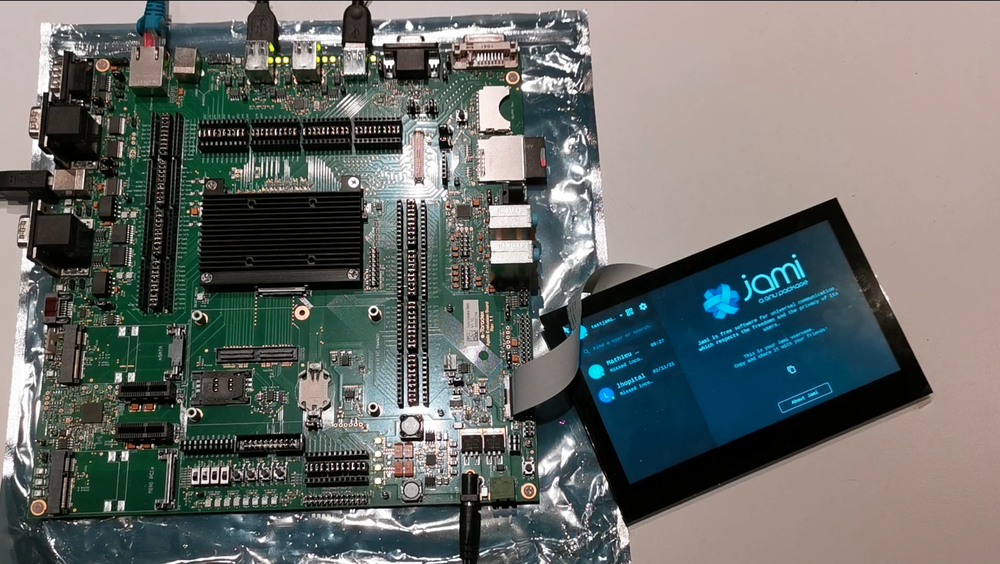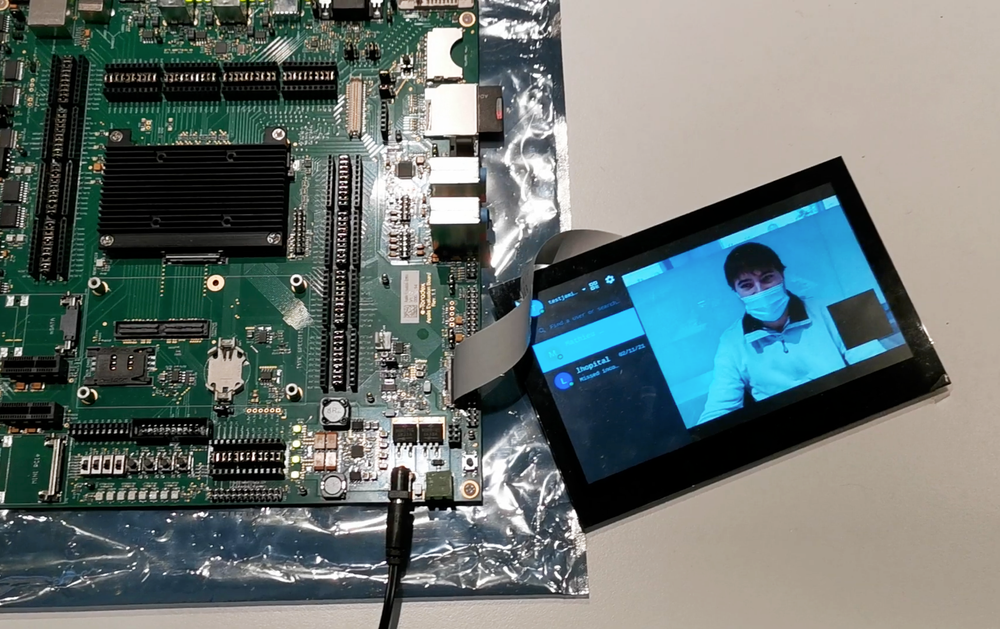How to bring fully distributed and secure communication capabilities to embedded products and IOT (Part 2).
In a previous article, we presented our work on including Jami in Yocto. This was a huge step to make Jami available on all types of devices. But this Yocto layer was only usable for x86 architectures. In fact, it was a step towards the embedded world, but it did not prove that Jami could run on an embedded board. That is why we have created a layer to run Jami on i.MX6. This article details the reasons why we add Jami to an embedded board and how we have done to run Jami on an i.MX6.
Read part 1 of this series of articles, to find out how to bring fully distributed, secure communication capabilities to embedded products and the IOT in Yocto.
Why add Jami to an embedded board ?
Jami is an open source communication tool developed by Savoir-faire Linux. Running Jami on an embedded board such as the Toradex Apalis i.MX6 opens the opportunity to run it on other embedded boards. It also creates the possibility to have secure communication and private life protection on all kinds of devices. In today’s world and more tomorrow, lots of objects are connected to the Internet. This technology is called Internet of Things (IoT). These new multimedia communications are not confined to smartphones and laptops, but are new used in personnal assistants, connected ringbells, babyphones, and much more. The security of these communications is very important for our private life. Jami therefore fits into this objective with its serverless, distributed and secure end-to-end encrypted communications.
Jami is available at https://jami.net
A layer system to run Jami on any platform
Yocto is organized on a layer system. This gives the freedom to take an existing layer and customize it by creating our own one on top of it. Therefore, the Jami i.MX6 layer is based on the previously created Jami layer (https://github.com/savoirfairelinux/meta-jami).
The main purpose of our work was to port Jami on a Toradex Apalis i.MX6 board without any significant source code modifications. Consequently, we created a layer that provides a machine, a distro and an image which includes Jami to run it on the Apalis i.MX6. The only source code modifications that we made was to use the hardware encoders and decoders of the i.MX6
Thus, we created two layers, the first one (meta-jami-imx : https://github.com/savoirfairelinux/meta-jami-imx) which includes Jami for i.MX6, that you can add to your i.MX6 custom image. And a second one (meta-jami-imx-toradex : https://github.com/savoirfairelinux/meta-jami-imx-toradex) that you just have to compile if you want to run Jami on the Toradex Apalis i.MX6.
Our work has been tested with a Toradex kernel based on a Freescale one. But you are free to use a mainline kernel, and it will not lead to a compiling issue.

How it works ?
In order to perform a call, we need to use the hardware encoders and decoders present on the board instead of software ones. Without hardware acceleration, all video encoding and decoding operations are executed on the CPU. Video compression and decompression are complex algorithms that generally can not be executed in real time on CPU cores. Therefore, using software codecs would make Jami unusable.
Jami is based on FFmpeg, and it doesn’t support i.MX hardware codecs. That is why, we applied some patches to FFmpeg to include these codecs (https://github.com/savoirfairelinux/FFmpeg/tree/sfl/master). We added h264 encoder and decoder for sending and receiving video, as well as MJPEG decoder to support some camera output format. In order to add them we based our work on the community API libimxvpuapi that provides the control of the i.MX VPUs (https://github.com/Freescale/libimxvpuapi). In addition, the only Jami source code modifications that we made, is to use these hardware encoders and decoders of the i.MX6.
To sum up, you can pick the layers you want for your personal purpose. To run Jami on x86, add meta-jami to your project ; to run Jami on an i.MX6, add meta-jami-imx6 to your Yocto environment. Finally, a straightforward test would be to take meta-jami-imx-toradex and its dependencies, build the image provided, and you can enjoy Jami on the Toradex Apalis i.MX6.










